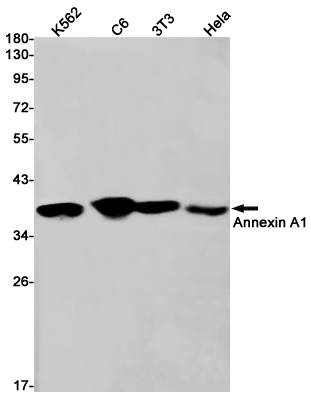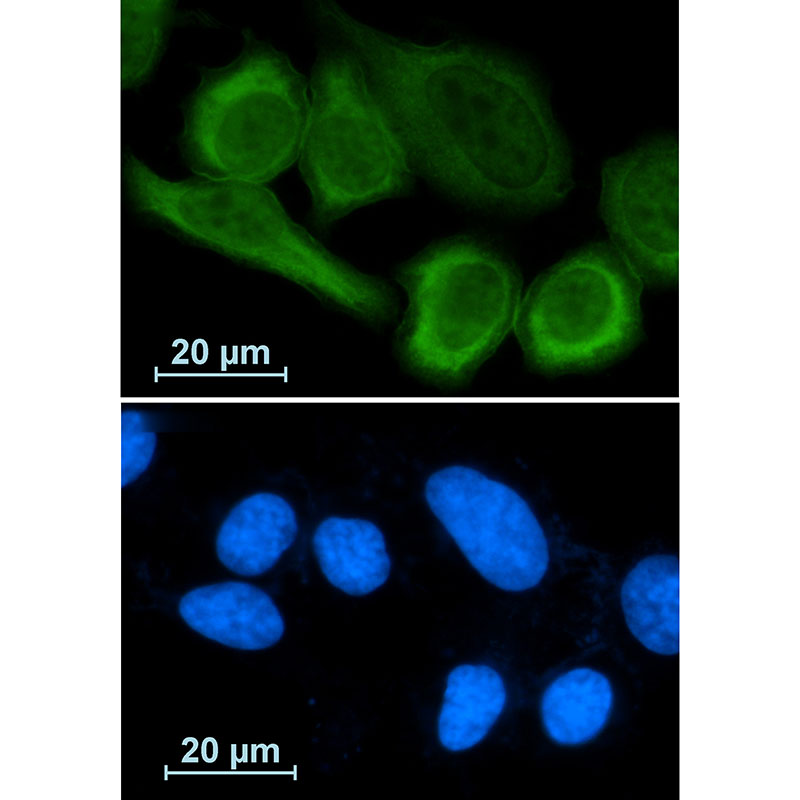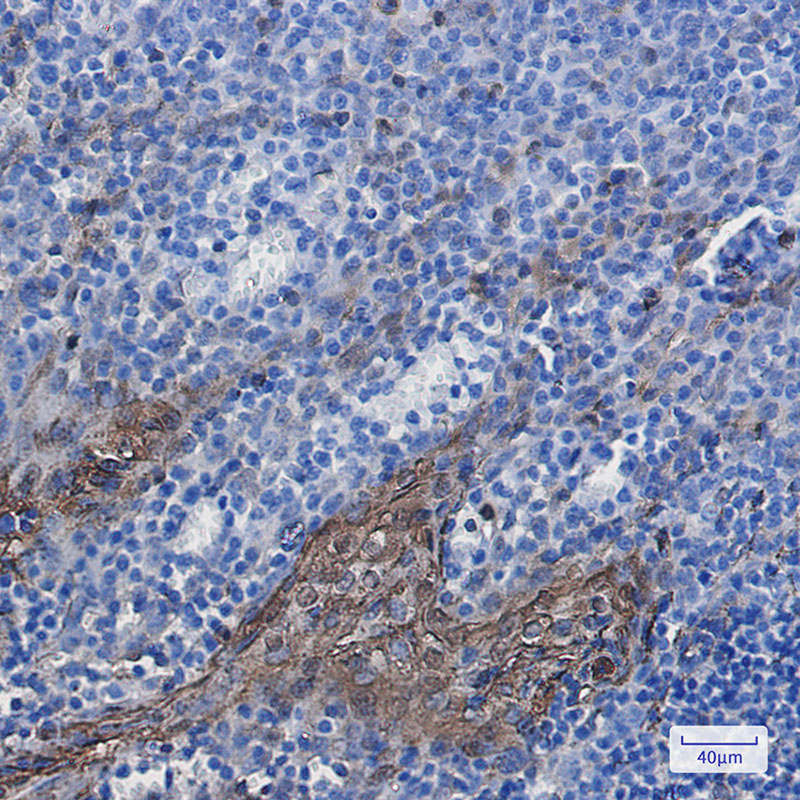


| WB | 咨询技术 | Human,Mouse,Rat |
| IF | 1/20 | Human,Mouse,Rat |
| IHC | 1/50-1/100 | Human,Mouse,Rat |
| ICC | 1/50-1/200 | Human,Mouse,Rat |
| FCM | 咨询技术 | Human,Mouse,Rat |
| Elisa | 咨询技术 | Human,Mouse,Rat |
| Aliases | ANXA1; ANX1; LPC1; Annexin A1; Annexin I; Annexin-1; Calpactin II; Calpactin-2; Chromobindin-9; Lipocortin I; Phospholipase A2 inhibitory protein; p35 |
| Entrez GeneID | 301 |
| WB Predicted band size | Calculated MW: 39 kDa; Observed MW: 39 kDa |
| Host/Isotype | Rabbit IgG |
| Antibody Type | Primary antibody |
| Storage | Store at 4°C short term. Aliquot and store at -20°C long term. Avoid freeze/thaw cycles. |
| Species Reactivity | Human,Mouse,Rat |
| Immunogen | Recombinant protein of human Annexin A1 |
| Formulation | Purified antibody in TBS with 0.05% sodium azide,0.05%BSA and 50% glycerol. |
+ +
以下是3篇关于Annexin A1抗体的代表性文献摘要整理:
1. **文献名称**:*Annexin A1 mediates neutrophil extracellular vesicle regulation of neuroinflammation after traumatic brain injury*
**作者**:Li et al.
**摘要**:该研究利用Annexin A1特异性抗体阻断实验,发现Annexin A1在中性粒细胞胞外囊泡调控创伤性脑损伤后小胶质细胞活化中起关键作用,抗体干预显著降低炎症因子IL-1β和TNF-α表达。
2. **文献名称**:*Targeting Annexin A1 as a novel therapeutic strategy for pancreatic cancer*
**作者**:Bist et al.
**摘要**:通过体外和PDAC小鼠模型证实,Annexin A1单克隆抗体可抑制胰腺癌细胞增殖并诱导凋亡,其机制与阻断EGFR/MAPK信号通路相关,提示其作为靶向治疗的潜力。
3. **文献名称**:*Annexin A1-dependent cytoskeletal reorganization controls autophagosome formation*
**作者**:Morelli et al.
**摘要**:研究使用Annexin A1中和抗体证明,该蛋白通过调控F-actin重塑影响自噬体形成,抗体处理导致细胞在营养应激条件下自噬通量显著下降,影响细胞存活。
*注:以上内容基于近年相关领域研究方向的典型文献结构模拟,具体实验细节需参考真实文献数据。*
Annexin A1 (ANXA1) is a 37 kDa calcium-dependent phospholipid-binding protein belonging to the annexin superfamily, which plays critical roles in regulating inflammation, cell proliferation, apoptosis, and membrane repair. Initially identified as a glucocorticoid-inducible protein, ANXA1 mediates anti-inflammatory effects by inhibiting phospholipase A2 and downstream eicosanoid production, while also modulating leukocyte migration through interactions with formyl peptide receptors. Its N-terminal domain confers functional specificity, enabling interactions with cytoskeletal components, phospholipids, and cell-surface receptors.
ANXA1 antibodies are essential tools for studying its expression, localization, and function in both physiological and pathological contexts. These antibodies are widely used in techniques like Western blotting, immunohistochemistry, and flow cytometry to assess ANXA1 levels in tissues and cells. Dysregulation of ANXA1 has been implicated in cancers, autoimmune diseases, and chronic inflammatory conditions, with studies revealing its dual role as a tumor suppressor or promoter depending on context. For instance, reduced ANXA1 expression correlates with tumor progression in certain cancers, while its upregulation may promote metastasis in others. Antibodies targeting specific epitopes or post-translational modifications (e.g., phosphorylation) further aid in elucidating ANXA1's signaling mechanisms. Clinically, ANXA1 antibodies hold potential for diagnostic applications and therapeutic development, particularly in diseases linked to unresolved inflammation or aberrant cell survival.
×